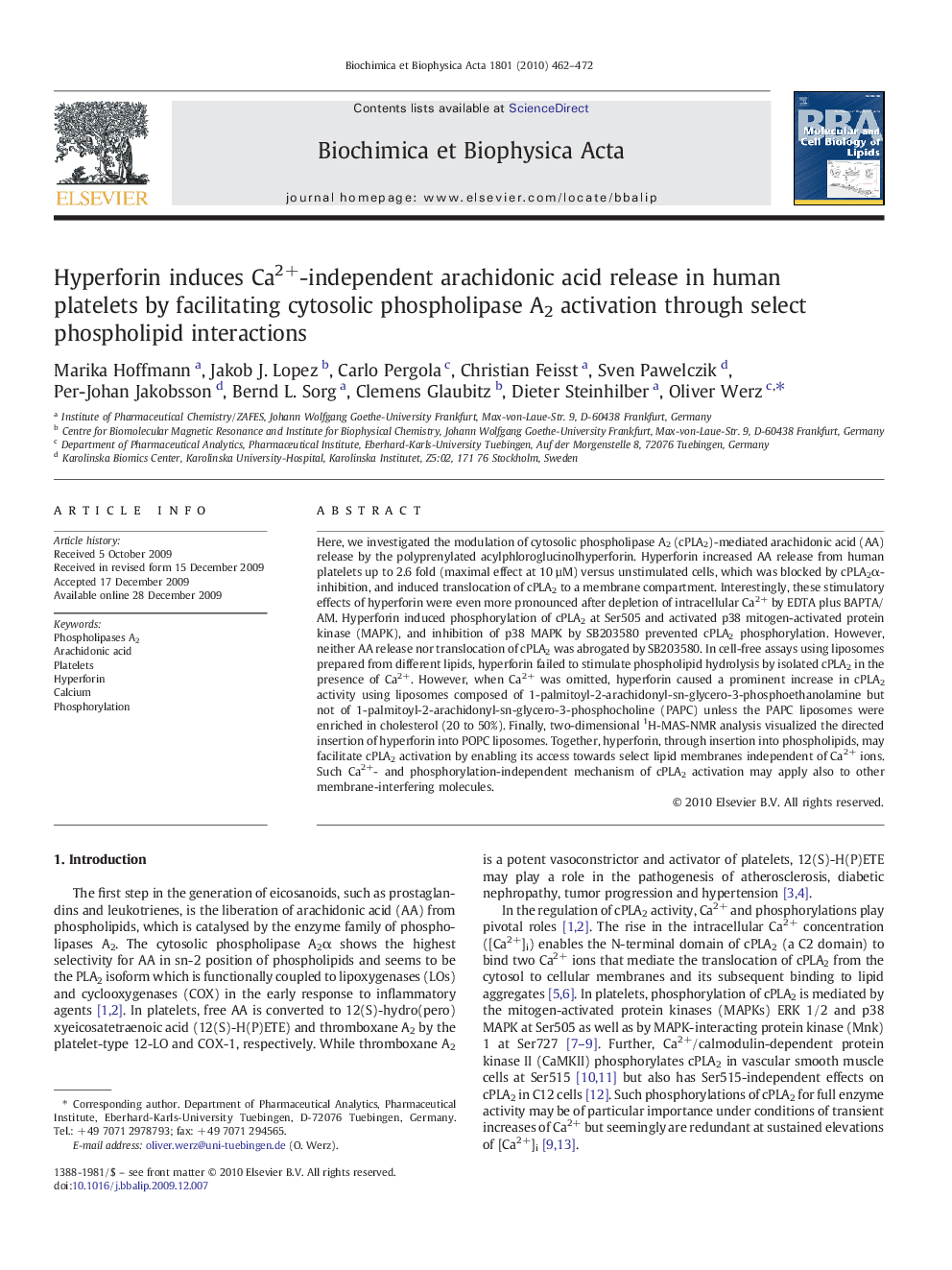| Article ID | Journal | Published Year | Pages | File Type |
|---|---|---|---|---|
| 1949762 | Biochimica et Biophysica Acta (BBA) - Molecular and Cell Biology of Lipids | 2010 | 11 Pages |
Here, we investigated the modulation of cytosolic phospholipase A2 (cPLA2)-mediated arachidonic acid (AA) release by the polyprenylated acylphloroglucinol hyperforin. Hyperforin increased AA release from human platelets up to 2.6 fold (maximal effect at 10 µM) versus unstimulated cells, which was blocked by cPLA2α-inhibition, and induced translocation of cPLA2 to a membrane compartment. Interestingly, these stimulatory effects of hyperforin were even more pronounced after depletion of intracellular Ca2+ by EDTA plus BAPTA/AM. Hyperforin induced phosphorylation of cPLA2 at Ser505 and activated p38 mitogen-activated protein kinase (MAPK), and inhibition of p38 MAPK by SB203580 prevented cPLA2 phosphorylation. However, neither AA release nor translocation of cPLA2 was abrogated by SB203580. In cell-free assays using liposomes prepared from different lipids, hyperforin failed to stimulate phospholipid hydrolysis by isolated cPLA2 in the presence of Ca2+. However, when Ca2+ was omitted, hyperforin caused a prominent increase in cPLA2 activity using liposomes composed of 1-palmitoyl-2-arachidonyl-sn-glycero-3-phosphoethanolamine but not of 1-palmitoyl-2-arachidonyl-sn-glycero-3-phosphocholine (PAPC) unless the PAPC liposomes were enriched in cholesterol (20 to 50%). Finally, two-dimensional 1H-MAS-NMR analysis visualized the directed insertion of hyperforin into POPC liposomes. Together, hyperforin, through insertion into phospholipids, may facilitate cPLA2 activation by enabling its access towards select lipid membranes independent of Ca2+ ions. Such Ca2+- and phosphorylation-independent mechanism of cPLA2 activation may apply also to other membrane-interfering molecules.
